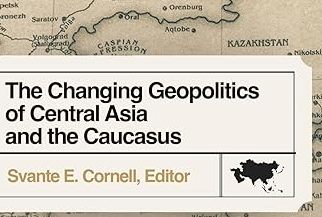Iran's empowerment in Central Asia and the South Caucasus
By Richard Weitz
October 19th, 2015, The CACI Analyst
Although international attention regarding Iran naturally gravitates towards Tehran’s activities in the Persian Gulf and the nuclear realm, Iran is also an active player in the South Caucasus, Central Asia, and Afghanistan. Thanks to its nuclear deal with the great powers, the subsequent relaxation of sanctions, and the growth of regional terrorism and Russian military activism, Iran’s influence in the region is set to grow considerably in coming years, though not necessarily to the benefit of the regional states or their Western partners.
- Iran
- Central Asia
- South Caucasus
- Iran nuclear deal
- Persian Gulf
- Iranian influence in South Caucasus
- Iraninan influence in Central Asia
- Iranian influence in Afghanistan
- President Rouhani
- Iran Armenia relations
- Iran Azerbaijan relations
- Iran Afghanistan relations
- Iran Russia relations
- Iranian Revolutionary Guard Corps
- Islamic extremism
- Afghan Taliban
- US military presence Afghanistan
- Saudi Arabia Afghanistan
- Islamic State ISIL
- Syrian civil war
The fall of Kunduz and Taliban resurgence
By Sudha Ramachandran
October 15th, 2015, The CACI Analyst
The fall of Kunduz to the Taliban has set alarm bells ringing not only in Afghanistan but also far beyond its borders. The capture of Kunduz, even if only temporary, has far reaching implications. It has dealt the Afghan government a heavy blow and is a huge setback for President Ashraf Ghani’s approach and strategy towards the Taliban. While it is expected to force the U.S. to revise its plans for troop withdrawal, Russia, China and Central Asian governments are watching the Taliban’s northward expansion nervously.
- Afghanistan
- Central Asia
- South Asia
- Capture of Kunduz
- Taliban Kunduz
- President Ashraf Ghani
- Afghan civil war
- Afghan National Security Council ANSF
- Afghan National Unity Government NUG
- US hospital bombing MSF Kunduz
- International Security Assistance Force ISAF
- US withdrawal from Afghanistan
- Mullah Akhtar Mohammed Mansour
- Mullah Omar
- Islamist militants in Central Asia
- Islamic extremism
- Islamic State Afghanistan
- Islamic militants Tajikistan
- Islamic militants Uzbekistan
Russia advocates peacekeeping mission as tensions flare over Nagorno-Karabakh
By Armen Grigoryan
October 13th, 2015, The CACI Analyst
Tensions along the line of contact in Nagorno-Karabakh and on the Armenian-Azerbaijani border have intensified from September 24, with skirmishes including the use of heavy artillery by both sides. Tensions have grown to a level where the danger of a large-scale confrontation should be seriously considered. Russia’s specific interests aggravate the situation, while the conflicting sides remain reluctant to seek a compromise solution. In this situation, Armenia and Azerbaijan are under increasing pressure to accept a Russia-led peacekeeping mission to the region.
- Armenia
- Azerbaijan
- Russia
- Nagorno Karabakh conflict
- CSTO peacekeeping mission Nagorno Karabakh
- Armenia Tavush region
- Sergei Lavrov visit to Baku
- Russia Arms Expo
- Russian arms sales Azerbaijan
- Russian arms sales Armenia
- EEU trade
- EEU single currency
- OSCE office Baku closure
- Council of Europe human rights Azerbaijan
- War by accident
- Eastern Partnership
- South Caucasus
Kyrgyzstan: beyond democratic elections
By Erica Marat
October 12th, 2015, The CACI Analyst
On October 4, Kyrgyzstan held parliamentary elections marked by significant improvements in the country’s democratic development. The elections have demonstrated the viability of Kyrgyzstan’s 2010 constitution, which delegates more powers to the parliament and aims to prevent the emergence of autocratic political center. Fourteen political parties competed, and six were able to pass the national and regional thresholds to win seats.



 Silk Road Paper S. Frederick Starr,
Silk Road Paper S. Frederick Starr,  Book Svante E. Cornell, ed., "
Book Svante E. Cornell, ed., "